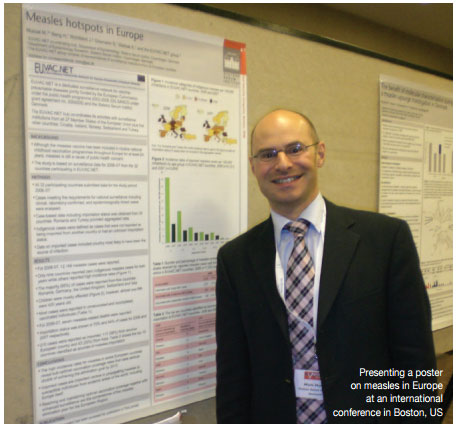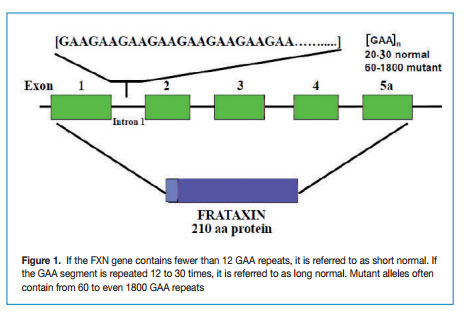The Misery of Measles
Marika Azzopardi
I write this interview against the news backdrop of a substantial measles outbreak in Wales which took the authorities by surprise and has infected 1,219 persons. 88 patients have been hospitalised and one patient died. According to BBC News, the outbreak has elicited the emergency administration of 50,000 non-routine vaccinations across this part of the UK, whilst over 40,000 high-risk youths remain unvaccinated. Fortunately, Public Health Wales declared that the saga officially ended last July. And I think back to what Mark Muscat told me about measles … “The World Health Organization Regional Office for Europe had planned to eliminate measles in the European Region by 2010. It did not succeed. The new target is now set for 2015.”
During the interview I had looked at him askance, and with medical news such as that which emerged from Wales, it seems unlikely that the elimination goal by 2015 is such a likely accomplishment. But what is the connection between Dr Mark Muscat, measles and WHO?
Mark Muscat graduated as a doctor in Malta in 1989 and proceeded with a Master in Tropical Medicine (Liverpool) which he supplemented with his stints in Kenya and Tanzania, working in the field. Then he followed a Master in Public Health (Malta) and a post within the Department of Public Health as a public health specialist. The next move took him up north, all the way to Copenhagen, Denmark to take up the post of co-ordinator for the then newly established European surveillance network for vaccine-preventable diseases, alias EUVAC.NET
The job entailed the solidification of surveillance on vaccine-preventable diseases, as well as the implementation of policies linked to such work at a European level. In September 2011, EUVAC.NET was integrated into the activities of the European Centre for Disease Prevention and Control, based in Stockholm, Sweden. That same year he completed his PhD on the challenges of eliminating measles in Europe.
Mark now works in the VaccinePreventable Diseases and Immunization programme of the WHO European Regional Office in Copenhagen. He describes measles as one of the most infectious disease known to mankind, it being airborne and highly contagious. “Even whilst the combined measles, mumps and rubella (MMR) vaccine was believed to be the be-all and end-all of measles, the Wakefield article published in The Lancet in the late 1990s (later on discredited) was instrumental towards some serious scaremongering that caused innumerable parents to opt against vaccinating their children. The report was highly publicised in the UK especially, and this led the UK measles vaccination coverage to decline significantly. This is partly the reason why measles is still endemic in the UK. However, outbreaks still flare up in other countries of the European Region, which includes not just the European Union, but also the ex-Soviet Union countries. Whilst the Region of the Americas has been declared officially free of measles, this is not the case in the WHO European Region. During 2008-2011 over 20,000 cases of measles were reported in France. Ten patients died from complications. In 2009-2011, an outbreak in Bulgaria resulted in over 24,000 cases of measles and 24 deaths. Currently, there are ongoing large-scale outbreaks of measles affecting hundreds of persons in Turkey and Georgia. During the first six months of 2013, six measles-related deaths were recorded in the European Region, Mark notes that elimination is not eradication. Elimination aims at stopping the endemic transmission of measles, yet there can still be minor outbreaks caused by the importation of the virus, which outbreaks would however, be small and quickly contained. He explains that this human disease usually presents in a mild form in children with fever, rash, runny nose, watery eyes and cough. However, some infected patients, particularly infants and adults, may develop complications such as pneumonia or acute encephalitis. “Invariably fatal is the manifestation of sub-acute sclerosing pan-encephalitis. This can occur years later and manifests itself with an abnormal gait, episodes of epilepsy and a fatally deteriorative state.”
The key strategy to eliminate measles is to vaccinate widely, to cover at least 95% of the population – the minimum percentage required to eliminate the disease. “The success of the vaccination programme depends on reaching such high vaccination coverage and vaccinating those still susceptible to the disease.” The first dose is usually given at 12 months of age with a second dose being administered at a later stage, during childhood, to reach out to that small percentage (5%) of patients who do not respond to the first dose.
“Reaching high levels of vaccination in the population is today presenting new challenges since many people are more afraid of the vaccine rather than the disease itself. One can say that in this instance, we are becoming victims of our own success. It becomes increasingly difficult to see the benefits of vaccinating against disappearing diseases when you don’t appreciate the risks of these diseases.” Compared with other vaccines such as the polio vaccine, the MMR vaccine is not mandatory and is only ‘highly’ recommended. This does not make it less important but, “protecting our society against vaccine-preventable diseases relies heavily on the goodwill of the public as well as the healthcare professionals’ positive recommendations towards vaccination.”
“The success of the programme also relies on a very good surveillance system which in turn depends on the constant collaboration with healthcare professionals.” Doctors and other healthcare professionals are urged to notify any suspicious cases and confirm them with laboratory tests. Yet, Mark admits that there are potentially serious failings on the part of those doctors who have never seen one single measles case during their training or practice. This means that they may not recognise the disease when they encounter it. “Recognising a disease never witnessed before is a huge challenge.”
Who is getting measles today? “This was part of my research which highlighted that unvaccinated individuals as susceptible individuals. These include individuals who are not eligible for vaccination such as infants too young to be vaccinated and those few with contraindications to the vaccine. These susceptible persons can only depend on population immunity, so-called herd immunity, to protect them. Then, there are specific vulnerable populations like the Roma ethnic minority groups in many European countries mostly in central Europe, orthodox Protestant communities in the Netherlands and followers of anthroposophic teachings mostly in German-speaking countries.”
In 2013, the World Health Organization Regional Office for Europe has started to verify elimination of measles with individual countries of the Region, and these will have to show 95% vaccination coverage and good performance on other indicators, to be given the all-clear. “As a public health specialist I have plunged myself in my work on the elimination plan, reporting on measles outbreaks, providing technical assistance to countries and advocating for the elimination of measles.”
So, is there another side to Mark?
Indeed there is. This 48-year-old also enjoys travelling, photography, reading, gardening and cycling, using the bike for 15km daily, rain or shine, to work and back. A more recent passion is that of iconography and the writing of icons in the traditional way using egg tempera on wood. “The art of writing icons leads to the contemplation of that which is divine and spiritual.”
I feel fortunate to have grabbed some of his little time during his recent short stay in Malta … perhaps his next visit will bring positive updates on the measles front.



